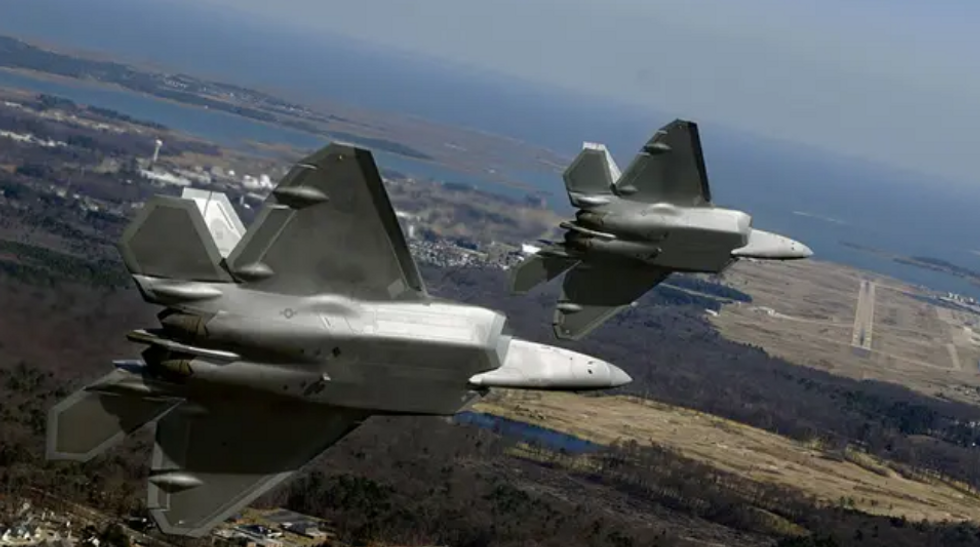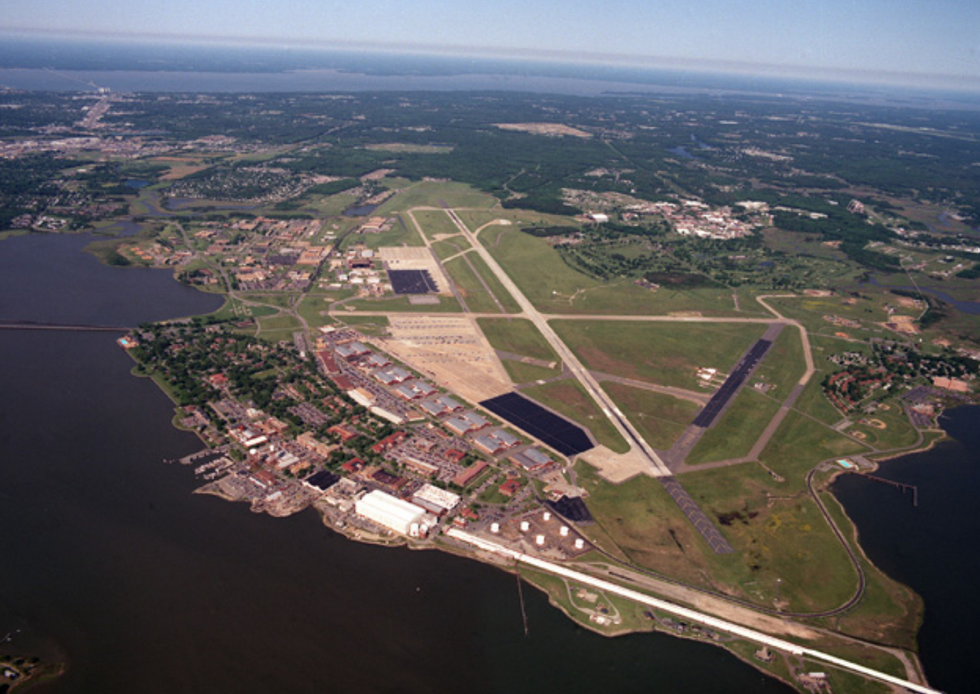94th Fighter Squadron F-22As approaching Langley Air Force Base
Wikimedia Commons
US military officials are not sure whether it was the work of hostile countries or hobbyists
Don't Miss
Most Read
Trending on GB News
Pentagon officials have been left perplexed by a swarm of mystery drones that flew over Langley Air Force base for 17 consecutive nights.
The flock of drones flew in a specific pattern over the base in east Virginia, with one or two-fixed wing drones flying over 100ft in the air, as smaller quadcopters flew below them.
General Mark Kelly, a commander at the airbase, said the drones were almost impossible to catch.
Despite flying across large areas around the base for more than a fortnight in December 2023, the Air Force could not shoot them down due to strict federal laws that stop the military from shooting them down unless they pose a threat.
 94th Fighter Squadron F-22As approaching Langley Air Force BaseWikimedia Commons
94th Fighter Squadron F-22As approaching Langley Air Force BaseWikimedia CommonsSome suspect the drones may have originated from Russia or China in an attempt to test American responses.
In a statement, the US Air Force confirmed the breaches but played down the potential threat.
“The number of UASs [uncrewed aerial systems] fluctuated and they ranged in size/configuration," the US Air Force said.
“None of the incursions appeared to exhibit hostile intent but anything flying in our restricted airspace can pose a threat to flight safety. The FAA was made aware of the UAS incursions.”
Analysts noted that the quadcopters did not utilise frequencies typically associated with commercial drones, suggesting they were not operated by hobbyists.
LATEST DEVELOPMENTS:
Due to the sensitive military location, as well as the prolonged nature of the incursions, analysts contacted the White House to help formulate an effective response.
Officials grappled with various options to combat the potential surveillance threat, although all choices have so far been rejected.
One suggestion involved using electronic signals to disrupt the drones' navigation systems, but this was dismissed due to the risk of interfering with Wi-Fi networks and emergency response systems.
Another proposal considered the use of directed energy weapons, an emerging military technology, to shoot down the drones.
However, the Federal Aviation Authority raised concerns about the potential danger to commercial aircraft during the holiday season.
A third option explored was the deployment of nets by the US Coast Guard to capture the drones.
This idea was also rejected due to questions over legal authority and the practical challenges of tracking the swift-moving aircraft.
While the investigation into the Langley incident continues, a potential lead emerged in January when a Chinese student was arrested for unlawfully photographing naval installations.
Fengyun Shi, who was studying at the University of Minnesota, was apprehended whilst attempting to fly back to China.

The flock of drones flew in a specific pattern over the base in east Virginia
Wikimedia Commons
Shi was caught flying a drone near a shipyard operated by HII, a company responsible for constructing nuclear submarines and the latest Ford Class aircraft carriers.
The student's drone, which had crashed into a tree, contained photos of Navy vessels in dry dock taken around midnight.
During a federal court appearance, Shi's attorney stated: "If he was a foreign agent, he would be the worst spy ever known."
However, the connection between this incident and the Langley drone sightings remains unclear.
The Langley incident is not isolated, as drones have been spotted at other sensitive US military sites.
Just two months prior, the Energy Department's Nevada Nuclear Security Site outside Las Vegas detected five drones over three days.
This location is used for testing nuclear weapons, underscoring the potential security risks posed by such incursions.
These events follow the high-profile Chinese spy balloon incident over Malmstrom Air Force base in Montana, where nuclear assets are stored.
On February 4 last year, the US Air Force responded by dispatching an F-22 fighter jet armed with an AIM-9X Sidewinder missile to take down the balloon over water.








